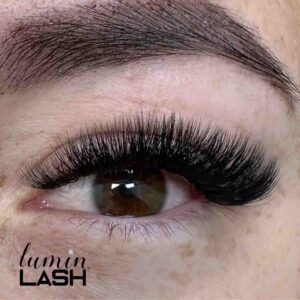If you’re a fashion retailer or vendor in the B2B space, you’ve probably noticed a shift: fewer buyers relying on outdated catalogs and cold calls — and more jumping onto digital fashion marketplace. The wholesale world isn’t just changing — it’s being redefined. And it’s happening faster than many businesses realize.
So, what exactly sets these new platforms apart from traditional wholesale channels? And why should it matter to your business?
Let’s dive in.
The Evolution of Wholesale: From Showrooms to Screens
Back in the day, wholesale was all about physical interactions — tradeshows, regional reps, and bulky catalogs. You’d either have to travel to meet vendors or wait for them to come to you. Orders were handwritten or faxed, and follow-ups could take weeks.
Today, B2B fashion marketplaces have digitized and simplified nearly every step of that process. Think of them as the Shopify of wholesale — just tailored for bulk buyers and sellers.
What Exactly Is a B2B Fashion Marketplace?
A B2B fashion marketplace is an online platform where verified retailers can browse, compare, and purchase fashion and accessories in bulk directly from vetted suppliers. These platforms handle logistics, offer secure payments, and often provide tools like inventory tracking, flexible MOQs, or return management.
They don’t just connect buyers and sellers — they streamline the entire experience.
1. Accessibility and Reach
Traditional Wholesale: Limited by Geography
In-person relationships can be powerful, but they’re also limiting. Traditional wholesalers typically serve a specific region, and expanding beyond that takes significant time and money.
Fashion Marketplaces: Borderless by Design
Online marketplaces allow retailers in the UK to order from Italian manufacturers or Spanish boutiques without leaving their desk. You’re no longer bound by zip codes — just product quality and price.
2. Product Discovery and Curation
The Old Way
- Flip through printed catalogs
- Wait for seasonal showroom appointments
- Rely on your rep’s recommendations
The Marketplace Way
Marketplaces give you curated selections of trending fashion, often powered by real-time data. Filters help you find exactly what you need — whether it’s eco-friendly handbags or plus-size resort wear.
The result? Smarter purchasing with less guesswork.
3. Speed, Convenience, and 24/7 Availability
Traditional wholesale relies heavily on timing — emails, back-and-forth negotiations, and phone calls.
A B2B fashion marketplace runs 24/7. You can place orders at 2am or during your Monday coffee break. And if a product’s out of stock? You’ll know instantly — no surprise delays later.
For fast-paced retail, this matters more than ever.
4. Transparent Pricing and Minimums
Traditional wholesalers often work through layered pricing models, which vary by relationship, order volume, and location. It’s hard to know if you’re really getting the best deal.
Fashion marketplaces offer pricing transparency upfront. You can:
- Compare multiple vendors at once
- See minimum order quantities clearly
- Spot deals or bulk discounts immediately
5. Reviews, Ratings, and Real Feedback
Ever committed to a vendor and realized too late the quality didn’t match the promise?
Marketplaces usually include vendor ratings, buyer reviews, and even product feedback from verified retailers. This helps new buyers make informed choices — reducing risk on first-time orders.
It’s like Yelp, but for wholesale fashion.
6. Streamlined Logistics and Order Management
When you work with traditional channels, shipping, returns, and inventory management can be scattered. One supplier may use freight, another uses DHL, and your tracking is lost in a spreadsheet somewhere.
Many fashion marketplaces provide:
- Unified order dashboards
- Shipment tracking tools
- Simplified returns and reorders
Some even integrate with POS or inventory software to reduce manual work on your end.
7. Flexible Terms and Payment Solutions
Traditional wholesalers often require upfront payments or rely on wire transfers, which may be inconvenient or even risky for new buyers.
Most B2B fashion marketplaces now offer:
- Net 30 or Net 60 payment terms
- Secure escrow-style payments
- Buy now, pay later (BNPL) options
This helps retailers manage cash flow while scaling faster.
8. Better Data, Smarter Decisions
In traditional channels, you may rely on intuition or seasonal feedback to know what’s working.
Modern marketplaces provide data-driven insights:
- Bestsellers by category
- Seasonal trends
- Low-risk reorders based on sell-through rates
That kind of intel can be gold when you’re stocking shelves or planning your next season.
9. Vendor Diversity and Niche Opportunities
Want to stock niche sustainable brands? Or need a variety of styles from small independent designers?
Traditional wholesaling may offer only a handful of large suppliers. Marketplaces often feature a broader range:
- Indie labels
- Ethical or eco-friendly vendors
- Regional artisans with global shipping
This opens up new avenues for retailers who want to stand out from the crowd.
10. Scalability and Long-Term Partnerships
The beauty of B2B marketplaces lies in their ability to grow with your business. Whether you’re ordering 20 units or 2,000, the system scales.
And because the platform vets suppliers, supports logistics, and tracks performance, it’s easier to build lasting partnerships that actually grow your margins.
Conclusion: The New Standard for Wholesale Fashion
In today’s wholesale world, B2B marketplaces aren’t just the future — they’re the present. For growing retailers, they offer everything traditional wholesale can’t: speed, reach, transparency, and control.
While there will always be a place for personal relationships and boutique vendors, digital marketplaces offer the scale, data, and tools to thrive — especially when you’re juggling dozens of products and tight margins.
So if you’re still relying solely on catalogs and cold calls, it might be time to ask — are you leaving money (and efficiency) on the table?
Discover the latest in clothing apparel wholesale with Thokmandee — your trusted B2B partner for reliable sourcing and unbeatable style.
Frequently Asked Questions
1. Are fashion marketplaces safe for first-time B2B buyers?
Yes, most reputable platforms vet suppliers and use secure payment systems to protect both buyers and sellers.
2. Can I still negotiate prices on a B2B marketplace?
Some platforms allow bulk pricing tiers or direct vendor messaging, offering room for discounts depending on order size.
3. What categories can I find in a fashion marketplace?
Everything from apparel, footwear, and handbags to fashion accessories like scarves, jewelry, and belts.
4. How do marketplaces handle returns or damaged goods?
Policies vary by platform, but many offer buyer protection, streamlined return processes, and dispute resolution support.
5. Are marketplaces better suited for small or large retailers?
Both. Small retailers benefit from low MOQs and flexible terms, while larger buyers enjoy bulk pricing and scalable logistics.



